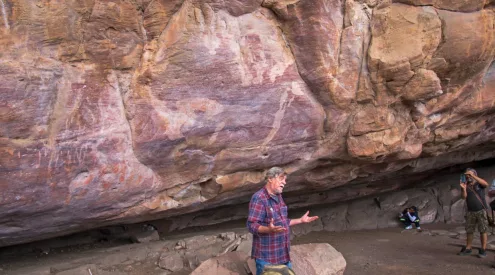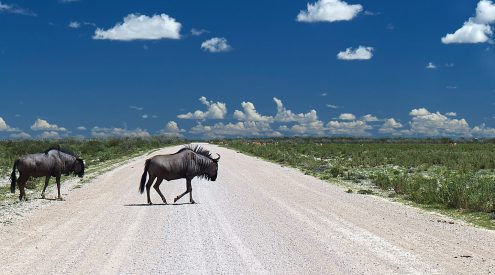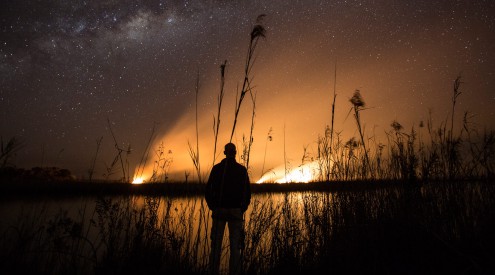Circumnavigating the world, via the poles… and the rules that go with it
If someone had told me ten years ago that in 2011 I would be departing on a 75,000km human-powered expedition, I probably would’ve laughed at them”¦ or told them they’d been drinking too much. But, here I lie, 199 days from departure on one of the last expedition firsts, a journey that’ll see me cross five continents, three oceans and both polar regions, spanning at least eight years.
Getting to this point has certainly not been easy or without challenges. Getting the buy-in from family and friends was tough in the beginning, but I soon learned who supported me and who didn’t. Getting buy-in from sponsors was even trickier and is an ongoing concern.
One of the biggest issues stemming from launching a campaign such as this is the complex set of rules that can quickly destroy any claims one makes and tarnish that hard earned reputation. One slip of the tongue or one slip up from a journalist or PR person can destroy any chance of progress.
You see, if you’re on holiday and you’re enjoying a trail and decide to take a shortcut, nobody cares. If you’re 4×4’ing and you have an extra vehicle with some more food and spares, nobody cares. But, the moment you say that it’s a first or the fastest, then things change rapidly!
I recently posted on Facebook & Twitter that, to date, only one person has completed a human-powered circumnavigation of the world. While some responded in amazement, I was also subjected to a fair whack of abuse from people the world over. Those pointing out my error were, of course, in support of others who have claimed a human-powered circumnavigation.
So why is this such a big deal and worthy of a blog itself? Well, I’m setting out to undertake a human-powered circumnavigation [HPC] of the world, via the Geographic North & South Poles”¦ so knowing whether it’s the first, second or third HPC is pretty important.
– – – – – – – – – – – – – – – – – – – – – – – – – – – – – – –
“We have long felt that the Holy Grail of
expedition challenges would be a
human powered circumnavigation of the world
intersecting both poles”
www.AngusAdventures.com
– – – – – – – – – – – – – – – – – – – – – – – – – – – – – – –
Now, according to our friends over at Guinness, these are the guidelines for a human-powered circumnavigation:
1. “Human-powered means something powered by a single traveller only, all vehicles used cannot be propelled by multiple persons (rowing tandem, etc.)”
2. “The traveller may travel on foot or use any machine that is propelled solely by his/her own power. This would include, for example, bicycles, rowing boats, kayaks, skateboards etc. but excludes wind-powered vehicles and vessels of any kind”
3. “Each leg of the journey must resume at the exact point at which the last ended”
4. “A circumnavigation involves a journey that starts and finishes at the same place. The total distance travelled must exceed the length of the Tropic of Capricorn, namely 36,787.559km. The Equator must be crossed at least once. All lines of longitude must be crossed”
5. “The journey must proceed in one direction only, i.e. either East to West or West to East”
In addition to these, the following have been stated and accepted:
1. “A true circumnavigation of the world must pass through two points antipodean to each other” – Norris McWhirter, founding editor of Guinness, 1971
a. Also stated by Sir Francis Chichester [Gipsy Moth, 1967] and AdventureStats [2007]
2. “A true circumnavigation of the earth must”¦ cover a minimum of 40,000km” [ExplorersWeb / AdventureStats]
In short, Jason Lewis of Expedition360 was correct when he stated “Any attempt at quantifying a circumnavigation inevitably involves a complicated combination of criteria such as minimum distances achieved, minimum number of oceans/landmasses crossed, minimum meridians crossed etc, and as such is inherently open to persistent manipulation and dispute.”
So, the question remains”¦ who has actually completed a human-powered circumnavigation of the world? Colin Angus [Canadian] and Jason Lewis [British] are the only two to be considered here, and both claims have their flaws.
While these guidelines were not in place when he undertook his expedition, Angus falls short on a few points: 1) he only travelled in the northern hemisphere and therefore didn’t cross the equator, 2) he didn’t pass through antipodal points, 3) he shared rowing duties with his fiance/wife.
Jason, on the other hand, did cross the equator and did pass through antipodal points. However, 1) he shared pedalling duties in his pedal boat Moksha and 2) he didn’t complete the expedition stages in sequence [there is a dispute over a short stretch off the coast of Australia].
With all this being said, some of the rules only came into effect after the fact, so should they stand and be accepted? Tough call hey! Well, AdventureStats recognise Jason as the first and, to date, the only human-powered circumnavigation of the world.
Now that we’ve cleared that one up, it’s time for me to get back to the planning and preparation for “the holy grail of expedition challenges””¦ the first human-powered circumnavigation of the world, intersecting the poles.
Sources:
- http://www.angusadventures.com/circumnavigations.html
- http://www.expedition360.com/home/circumnavigation.htm
- http://www.explorersweb.com/oceans/news.php?id=16231
- http://www.adventurestats.com/rules.shtml
- http://www.adventurestats.com/tables/hpc.shtml
- http://www.around-n-over.org/circumnavigation.htm
Original article written for http://www.raychaplin.com


















